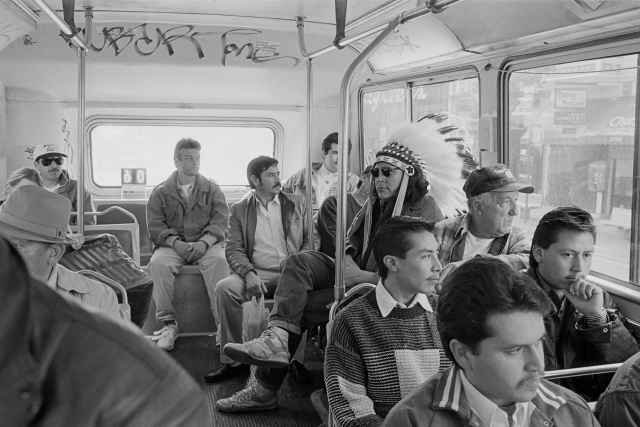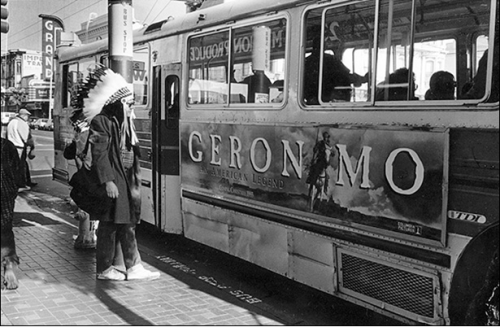 The state tree is a telephone pole, he joked.
The state tree is a telephone pole, he joked.
Zig Jackson (Mandan) began his story at the beginning: growing up in Fort Berthold, North Dakota.
Few trees and a lot of telephone poles in that part of the state, he said.
Jackson and his nine brothers and sisters were raised on the reserve that clumped together the Mandan, Hidatsa and Arikara people.
The reservation became home to the triumvirate of tribes in the 1930s after Missouri floods flattened government-allotted lands, he said.
Jackson’s father made plains-style headdresses.Real headdresses, he emphasized.
Not the fakey, chicken-feathered ersatz top-hats worn in Hollywood.
You can’t buy them, Jackson said. They have to be given to you.
Jackson smiled: faux headdresses have served well his inner coyote.
When he lived in the California Bay Area in the 1990s, Jackson roamed the city with his camera and a fake headdress, asking strangers to take his photo when humor called.
In one black and white snapshot, Jackson lurches onto a city bus that has a boat-sized advertisement for the 1993 film remake of Geronimo.

In another print, Jackson sits in the back of the bus with the San Francisco denizens who seemingly ignore the head-dressed Indian.
His gentle talk was aimed at members of the Portland Art Museum crowd who are sincerely interested folk who asked Jackson many questions about reservation life.
Do all Indians have give-aways?
Who took the pictures of him in his photos?
How do non-Indians talk to Indians?
One answer he gave was the same advice he gives to his non-Indian photography students at Savannah College of Art and Design, where he teaches.
Have respect.
“You cut something down, you give something back.”
Jackson’s story of reciprocity gives me pause and I wonder what the world would be like if we lived according to this tenet: give back.
We are all connected.
We are all related.
Zig Jackson’s photographs are on display at the Portland Art Museum through 8 May 2016. His photography pictured is featured on the PAM website.
Pictured: Indian on Mission Bus (1994) and Indian Man in San Francisco.


Hello!
I read your post on Zig Jackson…hilarious. Loved it–and thank you for introducing me to him. I get his NDN humor…You mentioned Luci Tapahanso. I took a course from her at the UA Tucson, American Indian Studies, Nice lady! I appreciate your insights! Take care…joy mccabe, (Navajo)
LikeLike
Her writing was so deft; I loved every minute of her presentation. Weyweenah (Osage)
LikeLike
wonderful photography..
let me share some recent work in this field dome by my hubby
HD wallpaper
Cover Photos
LikeLike